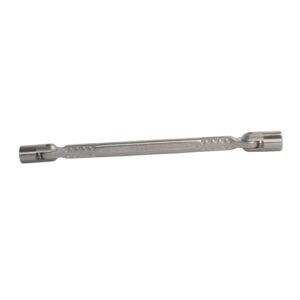If a socket wrench does not have a ratcheting mechanism, it is typically referred to as a non-ratcheting socket wrench or fixed socket wrench. Here’s a detailed look at this type of tool:
Features:
- Design:
- Socket Attachment: Features a handle with a square drive that allows interchangeable sockets to be attached.
- Fixed Handle: Unlike ratcheting wrenches, the handle does not have a mechanism for continuous rotation.
- Operation:
- Manual Rotation: Requires the user to remove and reposition the wrench after each turn. The handle must be taken off the fastener, repositioned, and then turned again.
- Standard Mechanism: It does not include any ratcheting or pivoting parts, making it simpler in design.
- Types:
- Fixed Head Socket Wrench: Comes with a fixed head and may be used with extensions or adaptors to reach different sizes of fasteners.
Uses:
- Automotive Repair: Suitable for standard tasks where ratcheting is not required, such as loosening or tightening nuts and bolts.
- Mechanical Work: Used in various mechanical applications where precise torque and control are needed.
- General Maintenance: Ideal for situations where a ratcheting mechanism is not necessary, such as in straightforward or slow-paced tasks.
Advantages:
- Simplicity: Fewer moving parts compared to ratcheting wrenches, which can make them more durable and less prone to mechanical failure.
- Cost: Generally less expensive than ratcheting wrenches due to their simpler design.
- Precision: Can be more precise for applications that require exact control of turning force.
Other Known Names:
- Non-Ratcheting Socket Wrench: Highlights the absence of a ratcheting mechanism.
Showing 57–57 of 57 results
